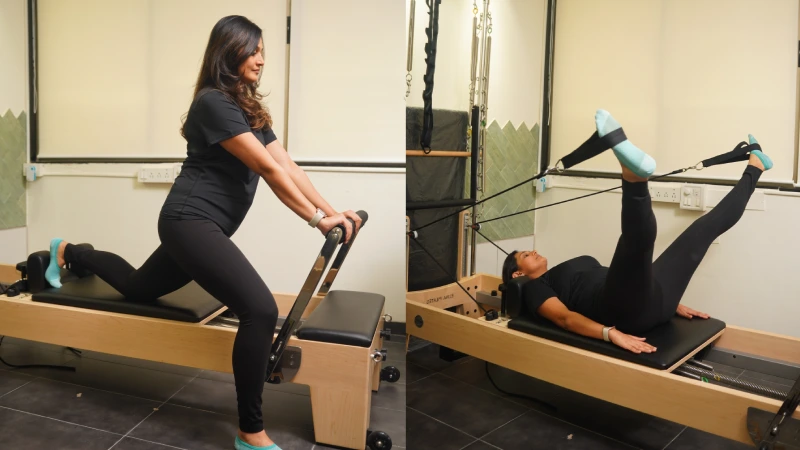In recent years, Pilates has emerged as a powerhouse in the fitness world, capturing the attention of athletes like Antonio Brown and Jake Arrieta, as well as fitness enthusiasts from all walks of life. Developed by Joseph Pilates in New York City in the 1920s, this holistic exercise method emphasizes the profound connection between mental and physical well-being, forging a harmony between mind and muscles.
Pilates zeroes in on core strength, controlled movements, and proper breathing, unlocking a treasure trove of benefits that enhance posture, balance, flexibility, and overall health. Its transformative potential isn’t limited to professional athletes alone; it extends its helping hand to pregnant women, individuals grappling with joint pain, those seeking to fortify their core and spine, and even those on the path to recovery from various injuries. What’s more, when Pilates joins forces with physiotherapy, the resulting tailored sessions can target specific health needs with even greater precision.
The Research Speaks Volumes
Cherie Wells, a senior lecturer in physical therapy at Griffith University in Australia, discovered that Pilates can improve posture and control over body movements. Her research also suggests that Pilates can relieve chronic low-back pain and enhance overall quality of life. Other studies have linked Pilates to increased flexibility, better trunk stability, injury prevention, and improved athletic performance. Additionally, one study even found a connection between Pilates and heightened mindfulness, which may lead to relaxation, mood improvement, and reduced stress levels.
Duncan Critchley, an exercise researcher at King’s College London, noted that Pilates effectively activates deep abdominal muscles compared to traditional gym exercises. Research from Spain has shown that Pilates can address imbalances in abdominal muscles along the sides of the torso.
In a study led by Lynne Gaskell, MS, at the University of Salford in England, researchers explored how Pilates impacted the lives of 15 individuals with chronic musculoskeletal conditions like lower-back pain and osteoarthritis. Besides physical improvements, the study revealed benefits such as a more active lifestyle, better condition management, increased self-confidence, and improved social interactions (Gaskell & Williams 2018). Gaskell emphasized that these improvements in daily life brought psychological and social advantages, motivating participants to stick with the program and embrace a healthier lifestyle.
Why Pilates Should Be on Your Radar : Immense Benefits
Pilates doesn’t fit the mold of a typical high-intensity workout that leaves you drenched in sweat. Instead, it’s a gentle yet remarkably effective form of exercise suitable for various fitness levels and a range of conditions. Here are some of the many benefits pilates offers –
- Improved Flexibility and Core Stability: These are pivotal aspects for enhancing speed.
- Heightened Explosive Power: Pilates, with its spring resistance, hones your ability to precisely rebound and explode.
- Precision in Movement: Mindful and efficient movement translates to a reduced risk of injuries, improved agility, and better alignment.
- Prolonged Athletic Longevity: Pilates balances muscles, counters age-related postural shifts, and prevents overuse injuries.
- Balanced Muscle Development: Pilates systematically targets major muscle groups, promoting strength and flexibility in a well-rounded manner, without overemphasizing certain areas.
- Joint Health and Mobility: Clinical Pilates, even integrated into rehabilitation programs, offers gentle yet effective exercises tailored to those experiencing chronic pain, recovering from injuries or surgeries, or dealing with various conditions. Pilates adapts to individual needs, accommodating different conditions and acuteness levels, ultimately strengthening muscles and joints while enhancing flexibility to prevent future injuries.
- Cognitive Benefits: Pilates challenges mental faculties by demanding multitasking, such as coordinating stretching, lifting, and balancing with controlled breathing. As individuals engage in these diverse activities, their focus, mental discipline, and memory all receive a beneficial workout, leading to improved cognitive function.
The Advantages of Pilates for Specific Sports
Pilates isn’t a one-size-fits-all approach; it can be tailored to suit various sports, each offering unique benefits:
For Swimmers: Pilates improves body alignment, strengthens the core, and ensures smoother, more efficient movements in the water. It also reduces the risk of strains and tears, helping swimmers perform at their best.
For Runners: Pilates corrects muscle imbalances, enhances core strength, and promotes efficient movement. This leads to better posture, reduced strain, and faster recovery, ultimately translating to improved running performance.
For Golfers: Pilates focuses on core strength and flexibility, which are essential for golfers’ swings and stability. It helps golfers achieve optimal backswing and follow-through, hit the ball with more power and accuracy, and reduce the risk
The Final Verdict
Pilates offers athletes and fitness enthusiasts a well-rounded and mindful approach to exercise that can lead to enhanced performance and overall well-being. Whether you’re pursuing a sport or simply want to elevate your quality of life, Pilates can be a valuable addition to your journey.

